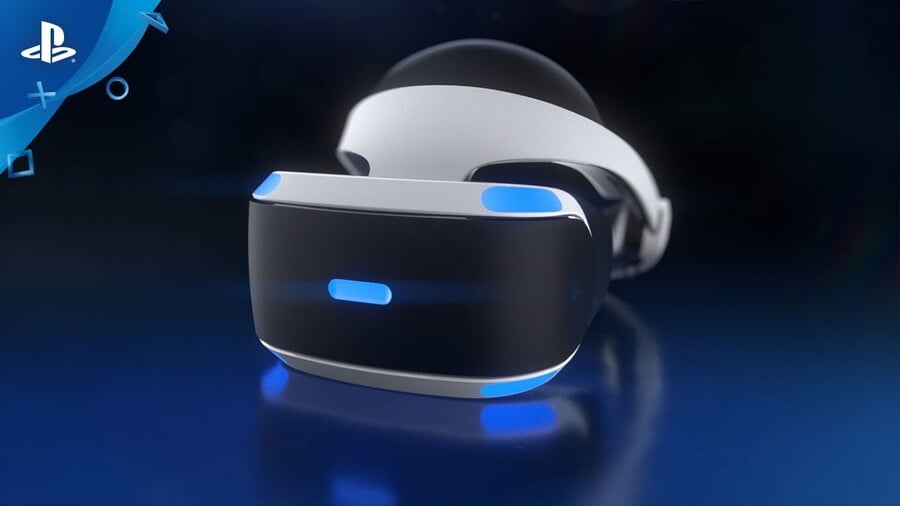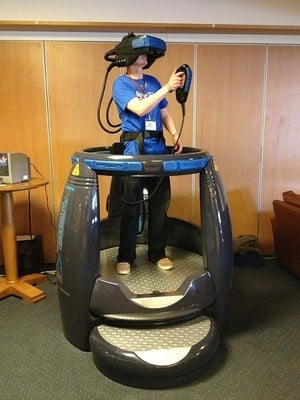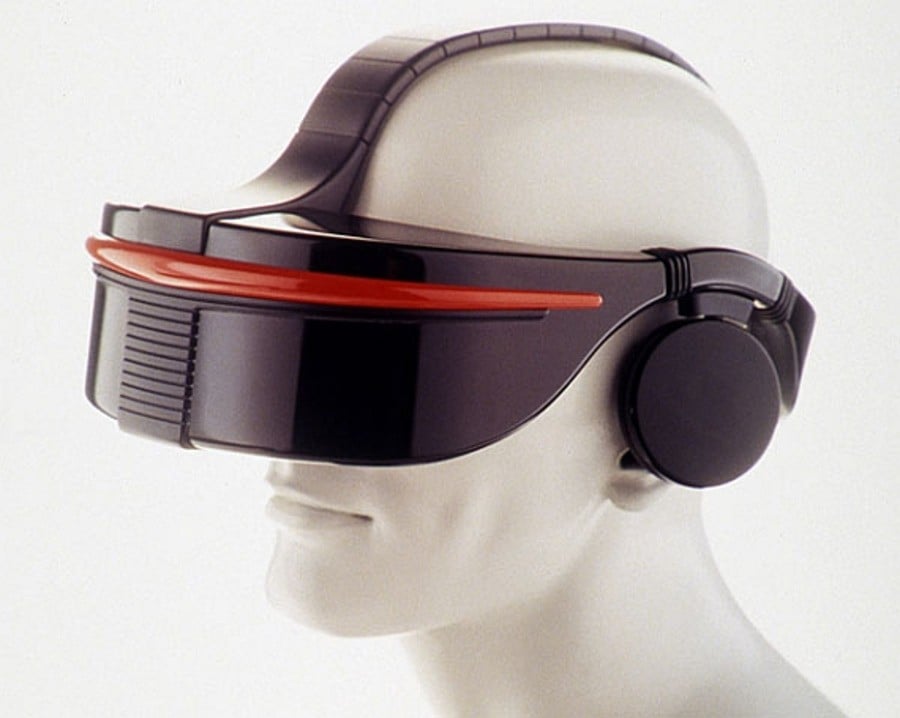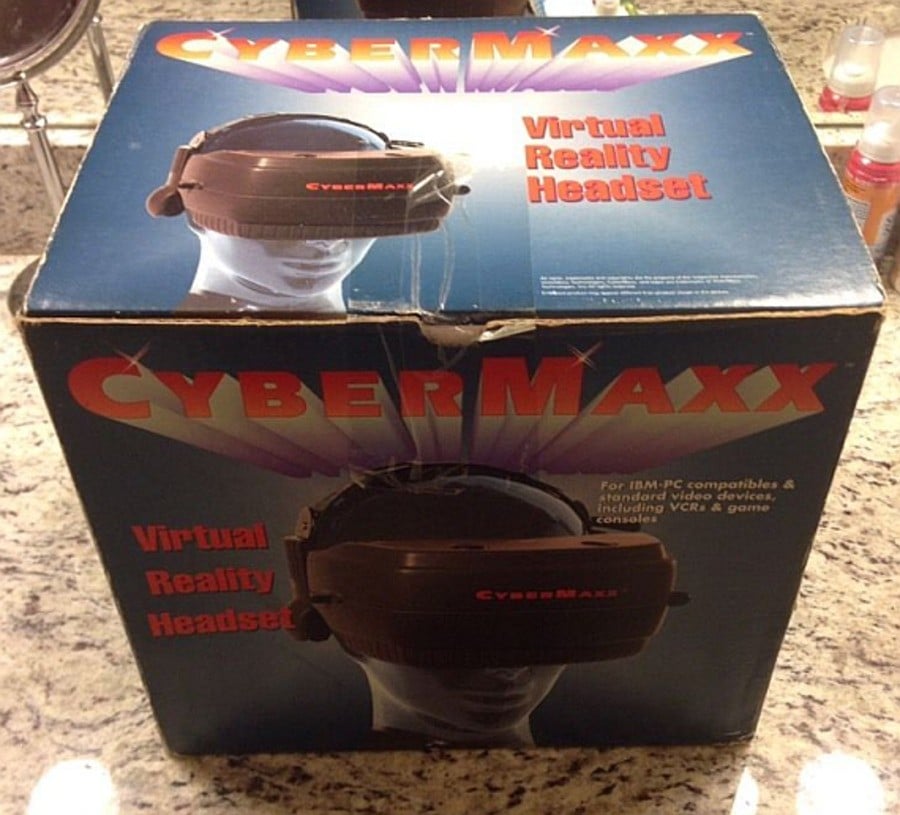
With the Oculus Rift and PlayStation VR well and truly on the way to our living rooms, virtual reality (VR) is the biggest news in gaming right now. But let's rewind the clock some two and a half decades, back when Sony was working on the Nintendo Play Station and the inventor of the Oculus Rift, Palmer Luckey, was still in his diapers.
In 1991, SEGA announced its SEGA VR virtual reality headset for arcade games, promising immersive gaming via its head-mounted display (HMD) unit with inertial sensors tracking and reacting to a user's head movements.

While SEGA was talking about VR, the Virtuality Group went one better by launching its stand up Virtuality pod enclosure system (the 1000 series) – the first mass-produced, networked, multiplayer location-based VR entertainment system – all powered by Amiga 3000 computers. These Virtuality pods featured a stereoscopic head-mounted display (the "Visette"), an exoskeleton touch glove to 'feel' objects in the virtual world, and a 'fast track' magnetic source built into the waist-high ring with a receiver which tracked the player's movement in real time within the enclosure – a truly immersive VR experience. Virtuality later introduced joysticks, steering wheels, and an aircraft yoke for control.
With the VR craze gaining mass consumer attention, it was inevitable that the technology would find its way into the lucrative home video games market. In 1993, SEGA was working hard to port its SEGA VR arcade HMD to its hit Mega Drive/Genesis console, but due to development difficulties, the console SEGA VR headset remained only a prototype, and was never released to the gaming public.
To fill the void, VictorMaxx entered the market with the world's first consumer VR HMD, the StuntMaster (VM1000) – the technology being developed under license from Future Vision Technologies. The StuntMaster was released in 1993 for USD$219.95 and came with assemblies to connect to both the Mega Drive/Genesis and the Super Nintendo consoles. The StuntMaster sported a tracking stem on the head unit which had fast response times and accurate positioning, but the low resolution, lack of VR specific games, and prolonged use causing motion sickness meant that the StuntMaster never caught on with gamers.

By 1994, home consoles became exponentially more powerful than the previous generation, meaning that VR could finally realise its full potential in the home. That year, Atari jumped on the VR bandwagon by signing a deal with Virtuality to design, develop, and produce a VR HMD for its 64-bit Jaguar home console. The Jaguar VR HMD was slated for a Christmas 1995 release, but financial woes at Atari caused the program to be abandoned, resulting in the Jaguar VR HMD being thrown on the already full failed VR scrapheap. To recoup its losses, Virtuality sold the Jaguar VR HMD technology to prolific Japanese toy manufacturer Takara and the huge electronics giant Philips.
In 1996, both companies raced to have a VR HMD on the market, with Takara producing and releasing the TAK-8510 Dynovisor HMD and Philips its Scuba Visor. These units sported the Pupil Projection System, which had a (then) ground-breaking 120-degree field of view (FOV) display using Sony's TFT LCD (thin film transistor LCD) screens. Coupled with the display was stereo sound and Inter Pupil Distance (IPD) focus adjustment – perfect for any user personalisation. The Dynovisor and Scuba could be used with any console that had composite video and red/white analogue audio ports (the PC version of the Dynovisor also came with a custom VGA PC interface). Neither units had motion tracking, hence their relatively low retail price (¥38,800 / USD$320). Like their contemporaries, they failed due to a lack of VR specific software and causing many a headaches after prolonged use.
Having recently experienced 1990s VR via Takara's Dynovisor HMD, we can vouch that it won't make you sick like the Virtual Boy, but that may be down to the unit having no motion tracking. After playing countless platform, driving, shoot-'em-up, and fighting games, we reckon that racing games are best suited for playing on an old VR HMD – but not for too long! These units came with a warning to rest your eyes after 30 minutes of play, and this is all for good reason.
Playing on these old-school VR HMDs is like having an IMAX screen two inches away from your eyeballs – there is a lot to take in – which works well, thanks to the 120-degree FOV. But after 30 minutes, your eyes will be begging you for a rest from the visual onslaught. Of course, none of the old games played on the unit were designed to take advantage of virtual reality, so the experience lacked the full VR immersion – a shame.

On the PC front, it was VictorMaxx's CyberMaxx model 2.0 HMD that provided the VR 'hit' PC gamers had been craving for. With higher resolution and improved optics than its previous 120 model (released in November 1994 for USD$499), the CyberMaxx 2.0 model also had dynamic stereo sound, focus adjustment for each eye, and real time yaw, pitch, and roll head-tracking, providing 3D stereoscopic images via compatible software. Released in August 1995 with a suggested retail price of USD$889, the CyberMaxx 2.0 didn't take off, with management concluding that its headset was not likely to gain widespread consumer acceptance at its suggested retail price. By the end of 1996, VictorMaxx exited the consumer electronics business, thus ending the future of the CyberMaxx VR product line. However, there is hope that the legacy of the CyberMaxx will lead the current (promised) VR products to good stead.
Walking through the 1990s VR product graveyard, a common headstone could summarise the reason for their failure: "Here rests a product which caused severe headaches, induced motion sickness, lacked great software, and was a concept ahead of the technology available at the time." Fast forward to 2016 and we have our fingers crossed for the imminent VR products to hit the market, and hope that they will deliver on the promises of their predecessors. Viva la VR!
Did you test out any of the VR products of the '90s? Do you think the current crop of HMDs are on a similar trajectory to their predecessors, or is the tech going to take off this time? Enter another world in the comments section below.


Comments 14
Lovely article, Alex. It's really interesting how long VR has been mulling around as a concept. PlayStation VR will represent the second wave really, and while it seems the goal hasn't really changed since the 90s, I think the tech has finally caught up.
The big challenge now is not so much whether it works, but whether it can generate the kind of install base required to be a success. It's going to be an interesting year. I can't wait to see how this stuff unfolds.
I really hope virtual reality is a success if it is imagine what aaa company's like naughty dog could make out off it
@get2sammyb Thank you Sammy. It was interesting to say the least. I am still gripped with motion sickness, so I hope the new VR gear gets this part right.
You have forgotten the binocular games of the early 80s. The classic car game, 4 lanes of traffic - avoid the traffic by pressing left or right. This was huge when I was in primary school.
@themcnoisy good old Tomytronics (Futuretronics 3D in Australia). I chose the 90s VR era as most people would relate to the HMDs that were produced in that decade. Oh yeh, I purposely left out the Virtual Boy (nothing against it, I personally love it, even though I can only play it for 5 minutes at a time).
In a way, I'm not ready for a new platform. It threatens the status quo, and I'd hate to see a significant portion of developers switch over to VR platforms rather than continuing to support traditional consoles.
Not that they'll ever stop making games for consoles, but every game released for VR is one less game released for consoles
@themcnoisy I had the shark attack one. Because sharks.
I'm excited for the PSVR because unlike most peripherals where games using the peripheral are noticably more casual, the PSVR's supporting games could end up being more player-focused than the average PS4 game. I'm not saying Bloodborne hardcore, just better than the games that supported Move and EyeToy.
@themcnoisy Tomytronic's were my first experience of this kind of technology. I had the space invader style one - move left or right and shoot the Alien invaders...
I also had a Virtual Boy with a boxing, tennis and another couple of games. However both of these induced terrible migraines in me and hurt my eyes - the Virtual Boy within a few minutes. The VB remains my least played console ever and the only console I have ever traded in - although part of me wonders how much a perfect, boxed version could be worth today?
I can't even watch a 3D movie without it being 'uncomfortable' for my eyes (I have an Active 3D TV - if that makes any difference) so wary of VR.
Its not just the 'image' and proximity to the eyes but the fact of having something 'blindfolding' you to your surroundings that also worries me a lot about VR. It may well be great at 'events' in short doses and with others keeping your surroundings clear but in a home environment and prolonged use, I am concerned about the health risks (inc those from being blindfolded) and long term effects of VR
Cool article! I had no idea that the concept of VR was explored so much in the 90s. Let's hope this new wave of VR tech is a little more successful
VR has been a long time coming I am not sure the technology was there before to make it a worth while experience. I have been looking forward to this moment since the early 90's.Technology often takes a few generations to work out its kinks so whether this will be the case now we will wait and see. A lot of work has gone into both the occulus rift and PSVR. This is never going to be for everyone some people do not even like wearing hats so are never gonna want this on their heads. But I hope it does well. There are people who are going to hate it and an equel number who will love it from day one. I rarely buy products straight off when they come out but VR will be different
Im hoping Sony finally announces the price soon. I do not want to wait till E3 to hear a price, and potentially when it comes out, later in the year. It'd be a drag.
That Virtuality 1000CS pod is mine!
come and see it at the Retro Computer Museum in Leicester!
Also please like Retro VR on FB, as well as Retro Computer Museum !
Leave A Comment
Hold on there, you need to login to post a comment...